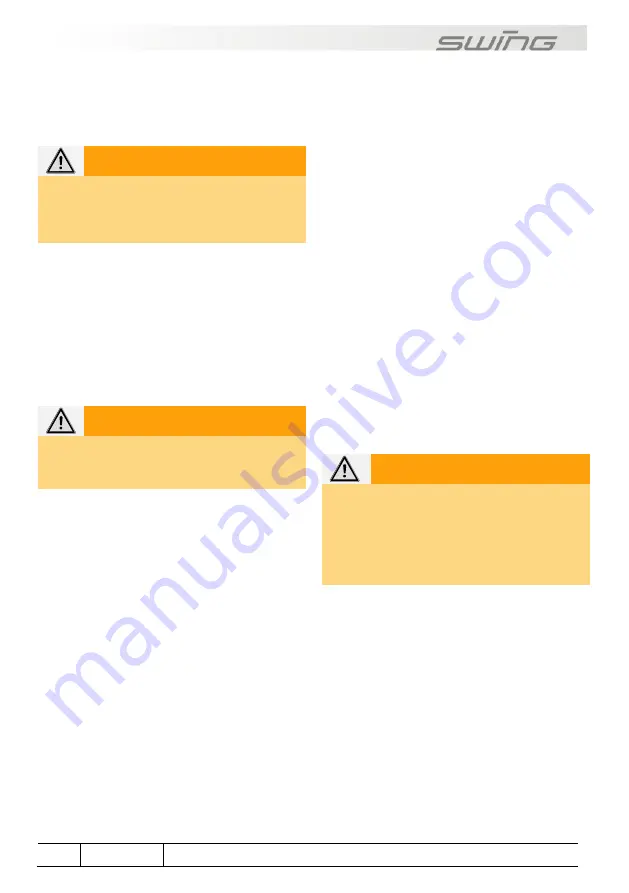
14
Section 04
Setting up the TWIN RS 2 and first-flying
04
Setting up the TWIN RS 2
and first-flying
Before the first flight
WARNING
A specialist must test-fly and inspect the
glider before your first flight. The test-flight
must be recorded on the glider information
label.
During production, the TWIN RS 2 goes
through several quality control checks before
finally undergoing an exact type certification
test. Conformity with the reference specimen is
checked and certified before the glider is
delivered to the customer. Extreme care is
taken in the manufacture of all patterns, lines
and riser lengths. They show a high level of
precision and should not be altered under any
circumstances.
WARNING
Any changes or improper repairs to this
paraglider render invalid the certification and
warranty.
Recommended weight range
The TWIN RS 2 must be flown within the
permitted weight range.
The weight ranges given in this Manual
generally refer to take-off weight (pilot and
passenger weight including clothing, glider,
harness and equipment). Determine your take-
off weight by weighing yourself with all of your
equipment and your backpack. Don’t forget to
weight also your passenger. Find out your
passenger’s weight as well.
In addition to the permitted weight range, Swing
gives a recommended weight range for the
TWIN RS 2. The flight characteristics of the
TWIN RS 2 are particularly well-balanced in this
range.
Swing offers the TWIN RS 2 in different sizes. In
order to choose the right size, you should
consider your weight and the intended use of
your paraglider.
If the weight range is sufficient and you prefer a
very dynamic, responsive and direct handling,
you should choose a high wing load and thus the
smaller glider model.
If you prefer to cover a very large weight range
of your passengers, you should choose the
larger model.
Within the recommended weight range, the
TWIN RS 2 reacts to weight changes only with
a slight increase or slowdown of the trim speed,
with hardly any influence on the glide
performance. Therefore, you can choose the
size according to your personal requirements.
Ballast
If ballast is used to alter take-off weight, make
sure that it is correctly positioned.
The ballast should preferably be stored in
harness pockets specifically for this purpose. If
your harness does not have special ballast
pockets, then attach the ballast symmetrically
as close as possible to the centre of gravity or
under the seat board.
Do not attach any additional ballast to the main
hang point of the harness.
WARNING
Additional ballast can affect the pilot’s centre
of gravity and the paraglider’s behaviour
during flight.
In particular, extreme flying and behaviour in
spirals can become much more demanding
if ballast is not positioned correctly.
Adjusting the main brake lines
The TWIN RS 2 is delivered ex factory with a
brake adjustment complying with that of the
test sample. This position is marked on the
steering line.
This adjustment will allow you to steer and land
the paraglider with almost no time lag.
The main brake lines must be checked by an
expert before the test flight, and must be
fastened so that the mark is visible approx.
5mm above the knot.
The length of the break line must not be altered.














































